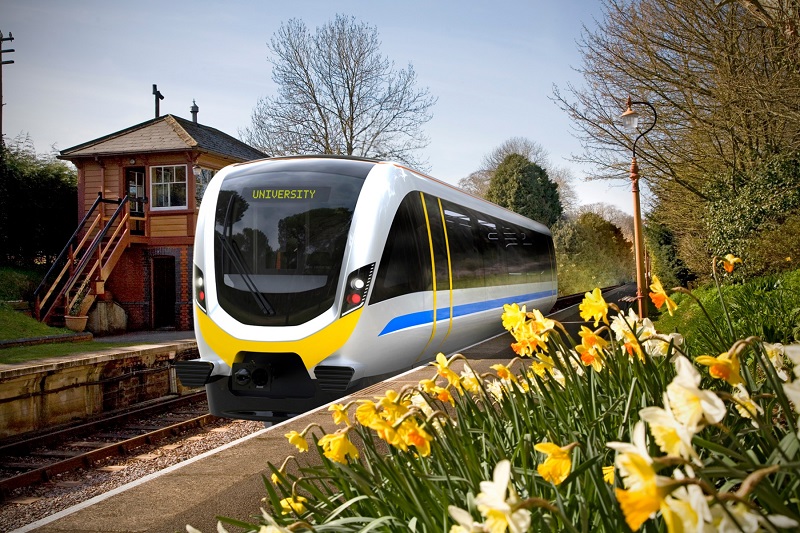The government together with the rail industry have recently announced another significant investment in the development of a new generation of very light hybrid trains. Graeme Paton, the transport correspondent of the Times wrote an informative article on this subject on Saturday February 11.
These small trains are half the weight and cost of the heavy rail equivalent and run on a combination of batteries and the most efficient diesel engines. They could be just what our local line is looking for.
The conventional wisdom in railway circles is that electrification for the approximately 8,000 miles of non-electrified rail network is the only answer to provide fast and reliable services. However the infrastructure to supply power is expensive and ugly. Do we really want more substations, pylons and wires littering the landscape around Rye?
The first prototype mini train will be built later this year but it will not be an easy ride to get them introduced. The strikes over driver-only-operated trains suggest that there is a real mistrust of new technology. The industry may resist these technological advances on the grounds of alleged risks but eventually they may have to accept that the best form of transport for the rural non-electrified network is hybrid light rail – with or without a driver.
Photo of mini train from http://www.tdi.uk.com




Whilst I agree that the infrastructure for overhead electric lines is unsightly, there is a major benefit over diesel trains, which are themselves environmentally polluting and many agree should be phased out. This is the ability to accelerate at a much greater rate, reducing journey times.
We have trodden this route previously, under the BR Modernisation Plan of the 1950s, with the introduction of lightweight diesel multiple units – and single car railbuses – to lower the costs of operating lightly used branch lines. They failed in most instances as the greater part of the cost was in the infrastructure itself and when there was also a large number of staff employed on even the lightest used of routes.
Times have changed. Whilst the Hastings to Ashford line was mooted for closure under the plans of Mr Marples – though commonly attributed to Dr Beeching who had to implement – it is now a thriving route with passenger numbers increasing substantially year on year. Part of this has been the introduction of “High Speed” services from Ashford and, to a lesser degree, the earlier introduction of Eurostar services from Ashford to the continent. The route has now been recognised as having the greatest cost effective potential for cutting journey times to London from places such as Hastings and Bexhill – and is particularly advantageous if the final destination is north of London – such as Ipswich, Norwich, Peterborough, York, Derby or Leicester – saving the laborious crossing of London by Underground, Taxi or Bus.
The biggest handicap though is that the Marshlink remains one of the very – and I mean very – few routes south of the Thames that is not electrified. This means dedicated trains have to be used, and to get the best use from them the services they operate commonly run over electrified lines – most of the trains from Ashford to Hastings continue over electrified lines offering a through service to Brighton.
Third rail electrification – as was last carried out on the route from Tonbridge to Hastings in 1986 – detracts little from the appearance of the railway and would enable operation of trains that are used on all surrounding routes – from Brighton, from Tonbridge and Tunbridge Wells, from Ashford, Canterbury and Margate. And the high speed Javelins trains that operate to St Pancras via HS1 can also run on third rail. The economies presented by use of a common fleet, both Southern and South Eastern’s, would very easily and quickly outweigh any new type of dedicated lightweight diesel trains.